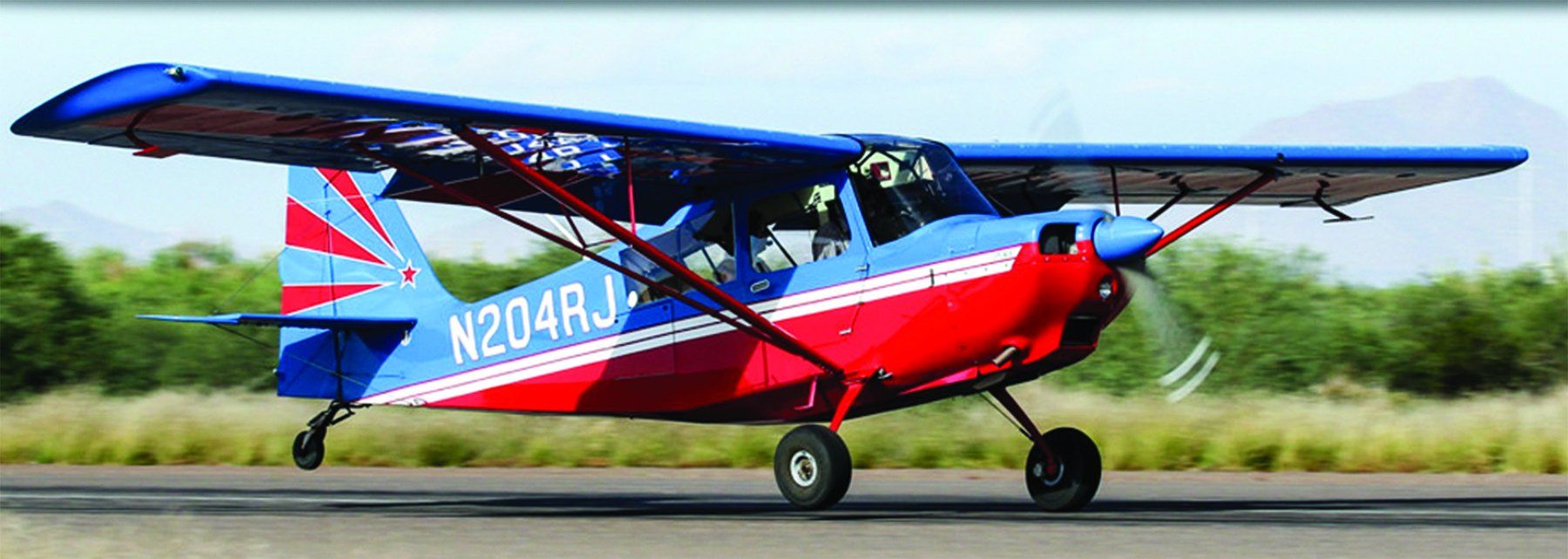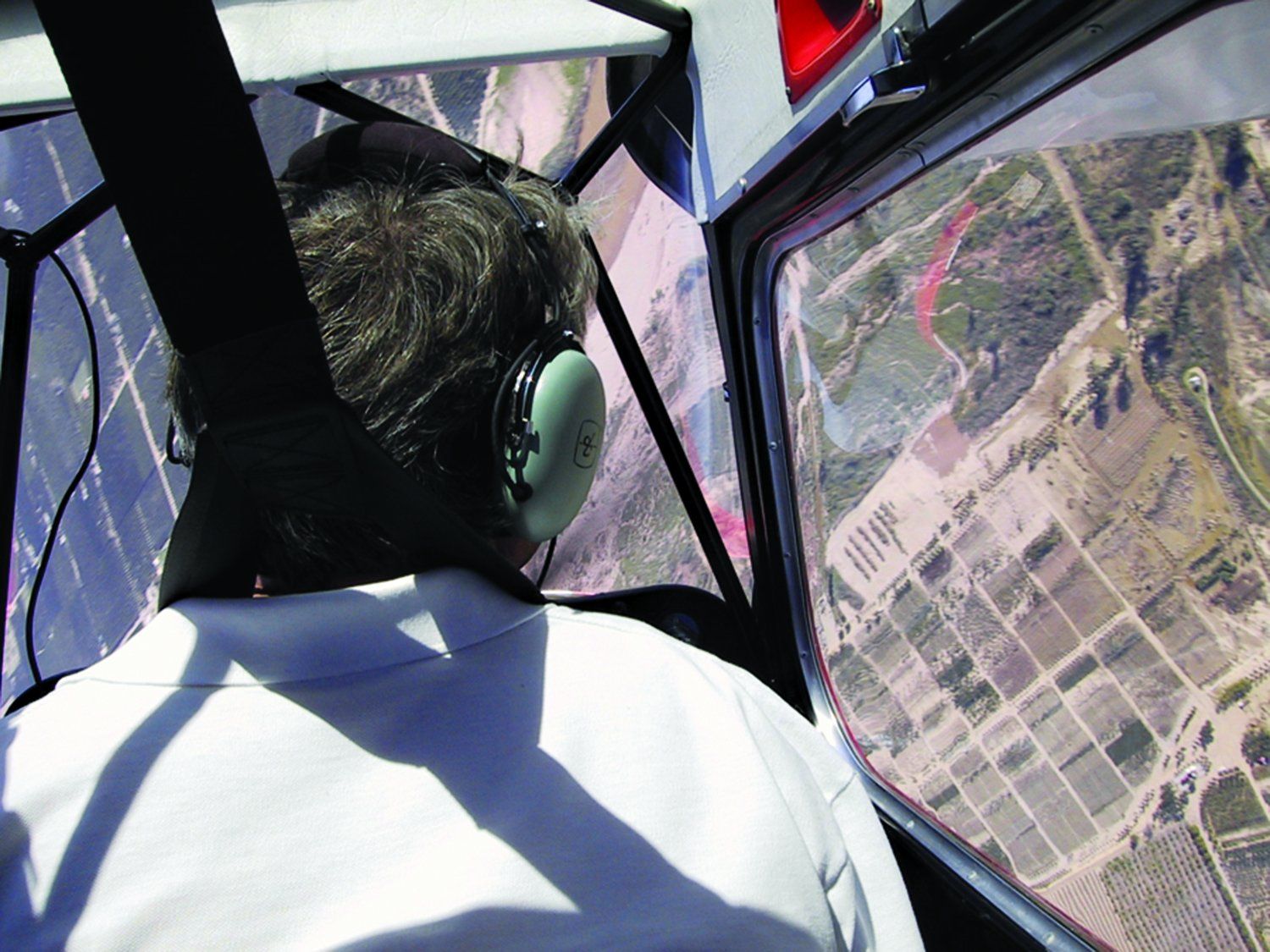My airplane has wingtip-mounted fuel tanks, installed under a supplemental type certificate (STC). In many ways, they’ve transformed and improved the machine by adding greater loading flexibility, thanks in part to a gross-weight increase. What drag they produce isn’t noticeable, and the additional endurance means the airplane is faster over some trips than it was before. For many of my destinations, I can depart with full tanks, fly to my destination, shoot an approach, miss it and fly home with reserves.
But the first time I flew the airplane after the installation was complete and signed off, I did slow flight and stalls to determine if the airplane’s low-speed characteristics had changed. After leak checks, I topped all the tanks and took off solo, heading for the practice area. I climbed to 3000 feet, cleared the area and flew level turns with the stall warner on for about five minutes. Then I pulled the power off and kept easing back on the yoke until the stall broke and the airplane fell off on a wing. I recovered, did one with some power and went home. My brief career as a test pilot was over. With the tip tanks installed, the airplane basically handled as it did before, and I was satisfied. But it just as easily could have gone pear shaped. I was, quite literally, the first to fly what was essentially an untested airplane.
There are many ways to screw up performing a stall series, but one of the easiest is to start out at too low an altitude. No, you probably won’t always need a 3000-foot altitude margin when doing stalls in a certified piston single (the FAA recommends at least 1500 feet), but it can’t hurt. Another way to screw up a stall series is to start out with plenty of altitude, but then not climbing back up where you were for the next round.
Background
On December 7, 2016, at about 1043 Alaska time, a ski-equipped Bellanca 7GCBC Citabria was substantially damaged when it impacted terrain about 17 miles southeast of Fairbanks, Alaska. The solo airline transport pilot was fatally injured. Visual conditions prevailed for the local flight, which was the first one for the airplane after a vortex generator (VG) kit was installed under an STC.
Data from a portable GPS receiver found in the wreckage included time, location and GPS altitude, plus groundspeed and track information. The airplane began its takeoff roll at 1026:14. Between 1033:11 and 1037:07, the airplane performed one right 360-degree turn and two 720-degree turns—one to the left and one to the right—while flying at GPS altitudes between 1601 feet and 1437 feet and maintaining groundspeeds of 44 to 100 knots. At 1037:07, the airplane turned to a southwesterly track and performed slow-flight maneuvers. The airplane slowed to 46 knots for a period of 19 seconds, accelerated and then slowed to 40 knots for 14 seconds before accelerating to 68 knots, maneuvers consistent with practicing stalls.
At 1040:52, the airplane began tracking southeast for two minutes and 36 seconds. During this final track, the airplane descended from 1545 feet to 981 feet, decelerated from 81 knots to 26 knots, and then entered a rapid descent at about 2000 fpm and a rapid turn to the south. About 30 seconds before the rapid descent began, the airplane had a rate of descent of 510 fpm as it decelerated below 40 knots. The last valid data indicated increasing groundspeed of 35 knots and a GPS altitude of 587 feet (75 feet AGL).
Investigation
All major components of the airplane were located at the accident site, which was contained within an area about 60 feet long and 20 feet wide at an elevation of about 512 feet MSL. The initial impact point was indicated by three freshly fractured spruce treetops about 350 feet from the wreckage. The fuel tanks were ruptured but liquid consistent with 100LL avgas was present in the left wing.
Both propeller blades sustained damage consistent with being under power during impact. Control continuity was established from the cockpit to the control surfaces. The VGs on the wings and horizontal stabilizer were examined, measured and determined to be installed in accordance with the manufacturer’s instructions.
The exact gross weight of the airplane could not be determined because its fuel load could not be verified. Based on the mechanic’s recollection that the fuel tanks were about full before engine start, the airplane’s weight was calculated to be 1705 lbs., 55 lbs. above its maximum gross takeoff weight. The center of gravity was calculated to be within limits.
Weather in the area included light northerly winds, visibility of 10 miles, clear skies below 12,000 feet and cold temperatures. Sunrise was at 1037, with the sun at an elevation angle of 0.1 degree above the horizon at an azimuth of 153 degrees true at 1043.
The VG manufacturer’s documentation called for a post-installation test flight “which need only consist of a subjective evaluation of aircraft handling to determine that no adverse characteristics exist.” The VG manufacturer did not provide guidance on how to conduct the test flight or determine any adverse effect. The STC application paperwork included a test-pilot notation that before the VG installation on a similar airplane, a definite left-wing drop was noted at aerodynamic stall; however, after VG installation, none was noted.
Probable Cause
The NTSB determined the probable cause(s) of this accident to include: “The pilot’s operation of the airplane at an altitude that was too low to allow for recovery from an intentional aerodynamic stall, which resulted in an impact with terrain. Contributing to the accident were the pilot’s inability to recognize altitude deviations during slow flight due to the sun glare and the pilot’s lack of knowledge of the stall performance characteristics of the airplane modified with vortex generators due to the lack of information from the manufacturer.”
The pilot initiated the practice stall sequence lower than recommended and apparently entered a deep stall with a high descent rate. The NTSB highlighted the VG-test airplane’s tendency to drop a wing in a stall before the VGs were installed and its lack of such a tendency afterward. It’s possible the pilot didn’t realize he was fully stalled, and the early-morning glare of the sun rising in his face helped with the illusion he was higher than he was. Regardless, he had insufficient altitude to safely recover from the maneuver before the airplane impacted terrain.
Aircraft Profile: Bellanca 7GCBC Citabria

Engine: Lycoming O-360-A2B
Empty Weight: 1150 lbs.
Maximum Gross Takeoff Weight: 1650 lbs.
Typical Cruise Speed: 111 KTAS
Standard Fuel Capacity: 35 gal.
Service Ceiling: 17,000 feet
Range: 480 NM
VSO: 39 KIAS
Prevent Aerodynamic Stall At Low Altitude

According to the NTSB, “While maneuvering an airplane at low altitude in visual meteorological conditions, many pilots fail to avoid conditions that lead to an aerodynamic stall, recognize the warning signs of a stall onset, and apply appropriate recovery techniques. Many stall accidents result when a pilot is momentarily distracted from the primary task of flying, such as while maneuvering in the airport traffic pattern, during an emergency, or when fixating on ground objects….
“Reducing [angle of attack] by lowering the airplane’s nose at the first indication of a stall is the most important immediate response for stall avoidance and stall recovery. This may seem counterintuitive at low altitudes, but is a necessary first step.”
Jeb Burnside is the editor-in-chief of Aviation Safety magazine. He’s an airline transport pilot who owns a Beechcraft Debonair, plus half of an Aeronca 7CCM Champ.
This article originally appeared in the December 2018 issue ofAviation Safetymagazine.
For more great content like this,subscribe toAviation Safety!


































